Barpeta Doul Utsav, also pronounced as Barpeta Deul Utsav, is the most happening thing in Barpeta district Assam which is situated 120 from the city of Guwahati. Every Year, this cultural and religious festival attracts thousands of visitors to Barpeta Satra, where Barpeta Doul Utsav is celebrated. This blog aims to provide comprehensive insights into the Holi Festival at Barpeta, covering every aspect in detail.
About Barpeta Doul Utsav
The word ‘Doul’ is synonymous with the Holi festival in India. Holi is locally referred to as Doul or Deul in Barpeta. Holi is a popular and significant Hindu festival celebrated as the Festival of Colours, Love, and Spring. It celebrates the eternal and divine love of the deities Radha and Krishna.
However, the Doul festival of Barpeta is much more than Holi celebration. It is a cultural identity for the people of Barpeta. Barpeta Doul Festival has preserved a century old tradition that traces its root back to the days of Srimanta Sankardeva (the great religious reformer of Assam).
Barpeta Doul Utsav History
It is said that the Doul Mahotsav of Barpeta has been organised since the days of Sankardeva. Mahapurush Srimanta Sankardeva and his disciples initiated this festival. Later on, Mathura Das Bura Ata (the first satradhikar of Barpeta Satra) popularised the festival among the masses. Thereafter, the doul festival has been celebrated with satriya parampara (tradition of Assamese Vaishnavism) till today at Barpeta Satra.
During the days of Mathura Das Burha Ata, a special prayer hall dedicated to Doul Mahotsav was constructed for keeping the Koila Thakur (a form of Lord Krishna). He also curated the elaborate rituals and performances observed during the festivals. The people of Barpeta have been steadfastly following the tradition since then without a break. Further, generations of local artists have contributed immensely to growth and popularity of Barpeta Holi Geet (song that are sung during Doul Mahotsav).
Why Barpeta Doul Utsav is So Special?
The Holi festival at Barpeta Satra is deeply rooted in the cultural heritage of Assam. It showcases various traditional art forms and performances such as holi geet (songs associated with the festival of Holi), bhaona (traditional Assamese theater), gayan bayan (devotional songs), ojapali (narrative folk songs), and dhulia nritya (comical dance drama).
The Barpeta Doul Utsav acts as a unifying force, bringing together people from all walks of life in the Barpeta district. It fosters a sense of community and togetherness among the residents, transcending barriers of caste, creed, and religion.
The festival also serves as a transition from the winter months to the vibrant and colorful spring season, filled with new beginnings and possibilities.
Timing of Barpeta Doul Mahotsav
Time and duration of Barpeta Doul Utsav depends on which Assamese month it is celebrated. If the festival falls on Sot/Chot month, it is celebrated for 3 days and is known as Burha Deul (translated to Holi for old age persons). If the festival falls on Faguun month, it is celebrated for 4 days and is known as Deka Deul (translated to Holi for youth).
If the time of Magh Nakshatra (tenth lunar asterism) falls on Faagun month then Holi is celebrated in Faagun month. If the time of Magh Nakshatra (tenth lunar asterism) falls on Sot month then Holi is celebrated in Sot month.
Normally, it is celebrated in the English month of March-April (Between the last week of March and the first week of April).
How Holi is Celebrated in Barpeta Satra?
In the months of “Faagun” and “Sot/Chot” the spring season comes, the world is filled with the green leaves of the trees, the flowers bloom, birds sing sweet songs, the gentle wind blows with fragrance and everything of this world changed into a different one. And it is in this sweet moment, that Doul Utsav of Barpeta is celebrated.
Before reading further, you understand various Assamese terms (on this blog) related to Barpeta Satras, you may read this blog where basic details of Barpeta Satra are elaborated with pictures.
Day 1 of Holi at Barpeta Satra: Gondh Deul
The first day of the deul festival is called Gondh Deul or simply Gondh Utsav. On the eve of this day, the idols of the two deities (Kaliya Thakur and Doul Gobinda) are relocated from the kirtanghar (main shrine of Barpeta Satra) to the courtyard of the math (the white-coloured structure beside the Kirtanghar), commonly referred to as Mathor Sotal.

Meanwhile, in the open space in front of the Kirtanghar, a bonfire or meji (like the ones that are burnt during Magh Bihu of Assam) is constructed. After that, the idols are moved around the burning meji. The idols of two Gods are finally shifted to doul-griha (a special prayer hall specially designated for the Holi Festival). The Gondh Festival then concludes with a fireworks celebration in the night.

Day 2 of Holi at Barpeta Satra: Bhor Deul
It is the main Holi festival at Barpeta Satra. If you are a visitor planning to visit Barpeta during Holi, it is the best time to visit Barpeta Satra. The day starts with morning prasanga(rituals) and other formalities. But the main show is Holi Geet (a song based on the Holi festival). On this day, people of all ages from the Barpeta area come to Barpeta satra with colours, cymbals, and dholkis to emerge themselves in Holi songs. Holi songs of Barpeta are composed so that anybody can participate, sing and dance to its rhythms.
The program of the Bhor deul depends on which Assamese month it is celebrated. If the festival falls on Faguun month, it is celebrated for 2 days. Otherwise, it is just a day celebration.
Various traditional cultural shows such as ojapali, gayan-bayan, dhuliya nritya are held along with Holi geet performance are help on this day.
Day 3 of Holi at Barpeta Satra: Fakuwa or Suweri
The last day of the double festival is called phakuwa and at Barpeta this day is called sueri. On this day the idol of God (Koila Thakur – a form of Lord Krishna) goes on a journey to Kanara Satra (a nearby place) by the devotees with a cultural procession. It is believed that the idol is taken to the house of Ghunucha (a deity widely followed by people of the area). As the idol of Krishna is taken back to the kirtan ghar, the devotees on the side of Lakshmi obstruct the entry of Lord Krishna at the main gate by fastening a bamboo turnpike horizontally and demand a tax.

A mock altercation takes place between the devotees on the side of Lakshmi and those on the side of Lord Krishna, the bamboo bar is broken with a thud and the devotees on the side of Lakshmi make way for the entry of the sedan of Lord Krishna. Then the idol is placed inside the Kirtanghar. Holi at Barpeta Satra is concluded with this ritual.

Do You Know Why The Mock Altercation Took Place?
There is an interesting story behind this tradition. As per this, Koila Thakur (the deity) is supposed to come back from the house of Ghunuca to the house of Mother Lakshmi. The deity is carried in a procession by all the people to Kanariya Satra, a place some half a mile away. At Kanariya the god is made to step out of the palki and given a kind of green pulse to eat. The Satradhikar or head of monastery speaks a few words on the significance of the festival. After that the deity is taken back to Barpeta. But, the gate of the Kirtan-ghar is barred to the deity with a strong bamboo.
The reason is Mother Lakshmi is angry with Koila Thakur as he was away for all these days at Ghunuca’s place. His followers beg her for pardon on His behalf, but to no avail. Both sides enter into an argument and ultimately fall out. By any means the bamboo is broken and the deity is carried inside the compound. But the followers tires after the hurdle and takes rest for a while. Taking advantage of the peace, devotees from Lakshmi’s side “reproves” Him; one of His devotees returns the reproof. An interesting verbal duel thus ensues. In the end He admits defeat, like a peace-loving husband, satisfies her with money and other presents and earns His admittance into the shrine. There ends the great Deul festival.
Barpeta Doul Utsav 2025 Dates
Barpeta Doul Mahotsav or Holi Celebration will be held from 14 March, 2025 to 16 March, 2025 with much fanfare.
Gondh Utsav: 14 March, 2025
Bhor Deul: 15 March, 2025
Sueri: 16 March, 2025


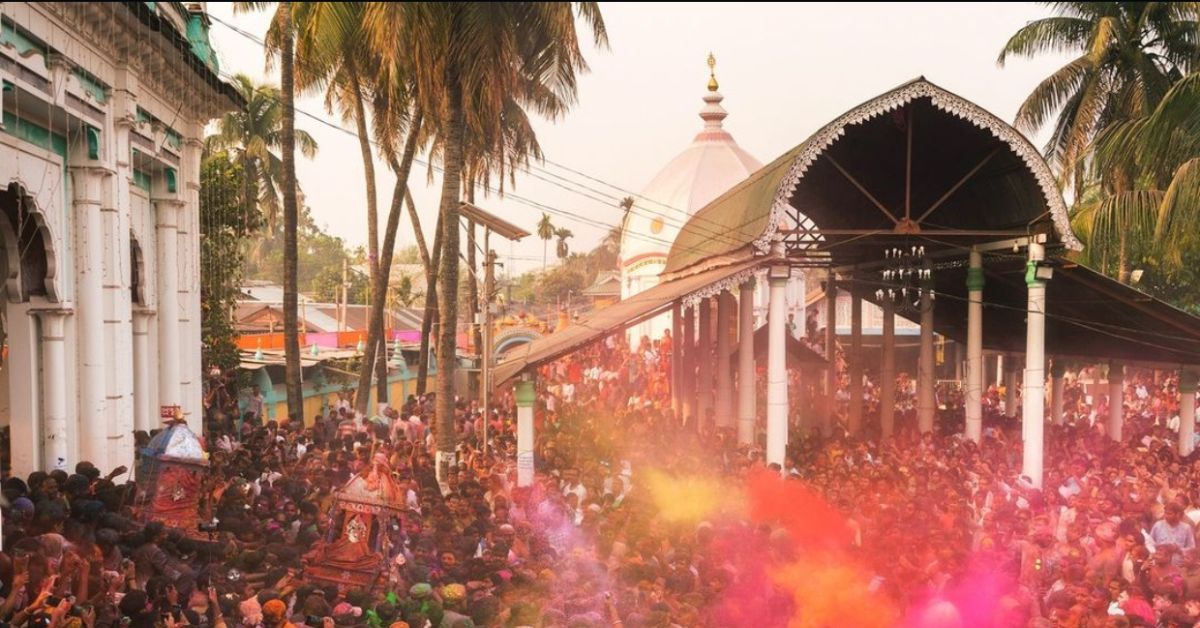

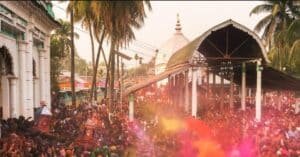





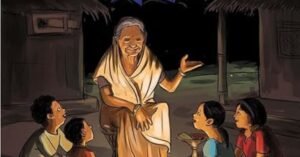
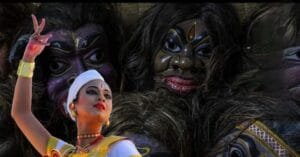




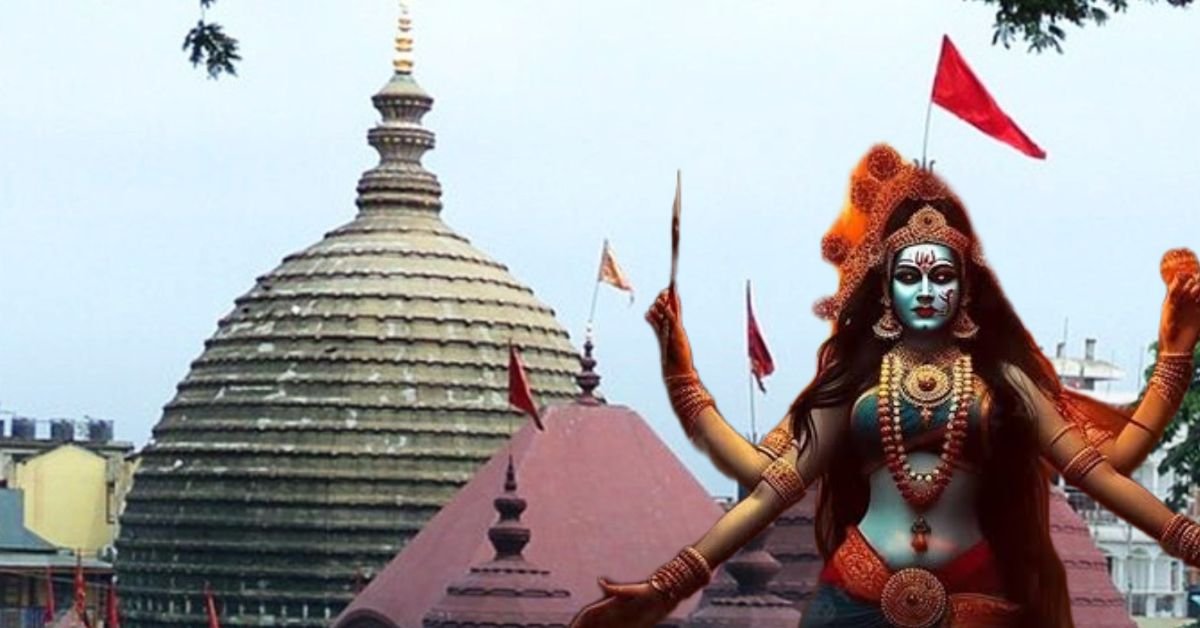
2 Responses
Very informative blog. keep sharing such information on assamese culture
Thank you. Please share our blog. It motivates us to write and showcase Assamese culture on a larger stage.